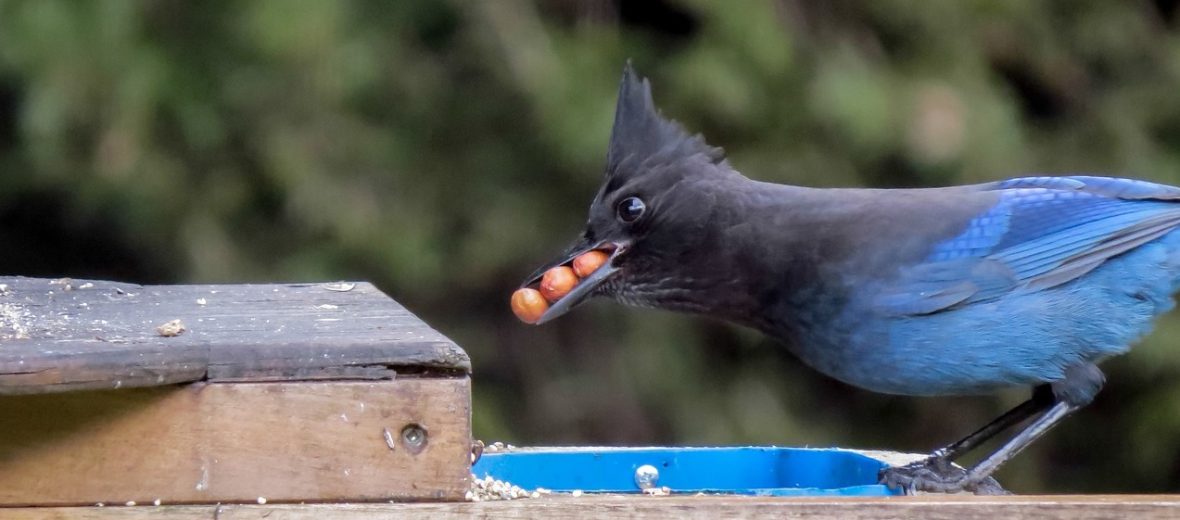
The stellar’s jay, aka pine jay, mountain jay, or long-crested jay, can be found from southern Alaska, to western Canada, through western United States, throughout Mexico, and into Central America. They prefer coniferous forests and pine-oak woodlands. Due to no real threats, sans habitat destruction and loss, and an increasing population of an estimated 2,800,000 wild individuals, these birds are listed as Least Concern by the IUCN.
First the Stats…
Scientific name: Cyanocitta stelleri
Weight: Up to 4.9 ounces
Length: Up to 13 inches
Wingspan: Up to 18.9 inches
Lifespan: Up to 16 years
Now on to the Facts!
1.) These critters are closely related to the famous bluejay that is found in northeastern United States and Canada.
2.) Stellar’s jays are very social and congregate into groups of various sizes. They play and chase each other as well.
3.) A group of jays is called a party, scold, band, or cast.
4.) These birds commonly cache seeds and other food in holes in the ground or in nooks of trees.
5.) It is very common to see them scavenging for food near camp sites or picnic tables.
But wait, there’s more on the stellar’s jay!
6.) They are diurnal (active during the day).
7.) Various calls are sounded from stellar’s jays, like “skreeka! skreeka” (which sounds identical to an antique pump handle being cranked, a “hoodle hoodle,” and a “SHACK-Sheck-sheck-sheck-sheck…” call, to name a few.
Did you know…?
These birds are the only crested jays west of the Rocky Mountains.
8.) Their diet is varied and consists of nuts, seeds, fruit, berries, insects, nestling birds, lizards, amphibians, and smaller rodents like mice, baby rats, voles, and moles.
9.) These jays are monogamous (mate for life, or for extended periods of time).
10.) Females lay up to 6 eggs that hatch in up to 16 days.
But wait, there’s still more on the stellar’s jay!
11.) The female usually tends to the incubation of the eggs while the male feeds the female.
12.) Chicks begin to fly at about 18 days.
13.) The parents continue to feed the chicks for up to 6.5 weeks.
14.) These clever birds are capable of reproducing the sounds of other birds and non-avian species as well. They will often reproduce the sound of raptors in order to cause other birds in the area to flee, leaving their food behind for the stellar’s jays.
Now a Short Stellar’s Jay Video!
Be sure to share & comment below! Also, check out the Critter Science YouTube channel. Videos added regularly!
Want to suggest a critter for me to write about? Let me know here.



